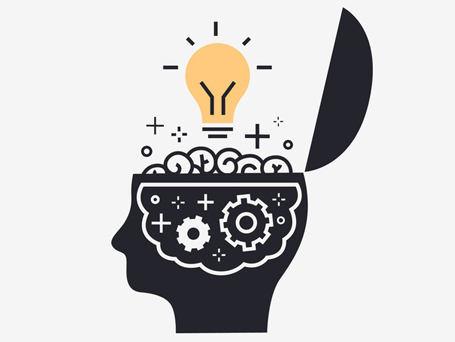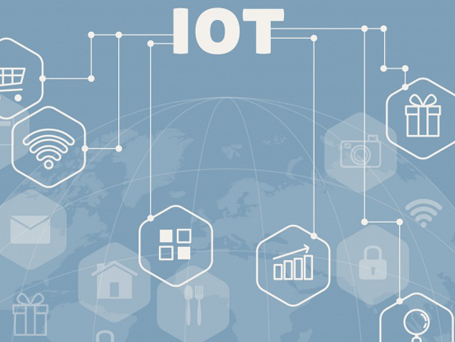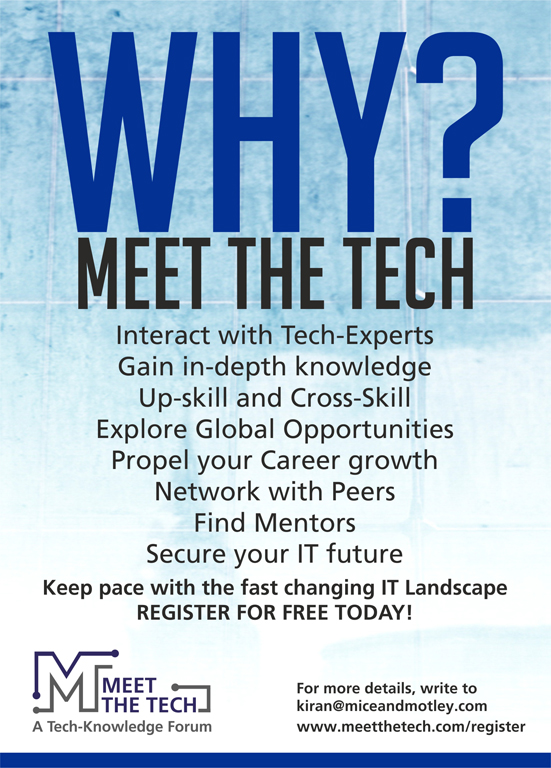-
DIGITAL TRANSFORMATION TO CONTRIBUTE
USD 154 Bn. TO INDIA’S GDP BY 2021.Industry is in the middle of a massive disruption.
Jobs will change and new jobs will emergeCapgemini study revealed that 55% of organizations
acknowledged that not only was there a huge gap for
STEM skills but it is wideningGartner estimates that even by 2020 -30% of tech jobs
will be unfulfilled owing to unavailability of relevant talent in digital.40%of employers report difficulties in finding skilled talent as
per survey by leading agency1.4 million person gap in 2020 between software development
jobs and qualified U.S. applicantsNiche Skills in Demand
Demand for 181k people globally with deep analytical skills
77%of IT decision-makers lack required skills for IoT;
47%of IT leaders said their firm had no IoT skillsDemand for 3 million Cybersecurity professionals over next 3 years
TEN SKILLS FOR THE FUTURE WORKFORCE
1. Sense Making
Definition: ability to determine the deeper meaning or significance of what is being expressed
As smart machines take over rote, routine manufacturing and services jobs, there will be an increasing demand for the kinds of skills machines are not good at. These are higher level thinking skills that cannot be codified. We call these sense-making skills, skills that help us create unique insights critical to decision making. When IBM’s supercomputer, Deep Blue, defeated chess grandmaster Gary Kasparov, many took this of a sign of its superior thinking skills. But Deep Blue had won with brute number-crunching force (its ability to evaluate millions of possible moves per second), not by applying the kind of human intelligence that helps us to live our lives. A computer may be able to beat a human in a game of chess or Jeopardy by sheer force of its computational abilities, but if you ask it whether it wants to play pool, it won’t be able to tell whether you are talking about swimming, financial portfolios, or billiards. As computing pioneer Jaron Lanier points out, despite important advances in Artificial Intelligence (AI) research it is still the case that, “if we ask what thinking is, so that we can
then ask how to foster it, we encounter an astonishing and terrifying answer: we don’t know.”1 As we renegotiate the human/machine division of labor in the next decade, critical thinking or sense-making will emerge as a skill workers increasingly need to capitalize on.
2. Social intelligence
Definition: ability to connect to others in a deep and direct way, to sense and stimulate reactions and desired interactions
While we are seeing early prototypes of “social” and “emotional” robots in various research labs today, the range of social skills and emotions that they can display is very limited. Feeling is just as complicated as sense-making, if not more so, and just as the machines we are building are not sense-making machines, the emotional and social robots we are building are not feeling machines. Socially intelligent employees are able to quickly assess the emotions of those around them and adapt their words, tone and gestures accordingly. This has always been a key skill for workers who need to collaborate and build relationships of trust, but it is even more important as we are called on to collaborate with larger groups of people in different settings. Our emotionality and social IQ developed over millennia of living in groups will continue be one of the vital assets that give human workers a comparative advantage over machines.
3. Novel & adaptive thinking
Definition: proficiency at thinking and coming up with solutions and responses beyond that which is rote or rule-based
Massachusetts Institute of Technology Professor David Autor has tracked the polarization of jobs in the United States over the last three decades. He finds that job opportunities are declining in middle-skill white-collar and blue-collar jobs, largely due to a combination of the automation of routine work, and global offshoring. Conversely, job opportunities are increasingly concentrated in both highskill, high-wage professional, technical and management occupations and in low-skill, low-wage occupations such as food service and personal care. Jobs at the high-skill end involve abstract tasks, and at the low-skill end, manual tasks. What both of these categories of tasks have in common is that they require what Autor terms “situational adaptability”— the ability to respond to unique unexpected circumstances of the moment. Tasks as different as writing a convincing legal argument, or creating a new dish out of set ingredients both require novel thinking and adaptability. These skills will be at a premium in the next decade, particularly as automation and offshoring continue.
4. Cross -cultural competency
Definition: ability to operate in different cultural settings
In a truly globally connected world, a worker’s skill set could see them posted in any number of locations—they need to be able to operate in whatever environment they find themselves. This demands specific content, such as linguistic skills, but also adaptability to changing circumstances and an ability to sense and respond to new contexts. Cross-cultural competency will become an important skill for all workers, not just those who have to operate in diverse geographical environments. Organizations increasingly see diversity as a driver of innovation. Research now tells us that what makes a group truly intelligent and innovative is the combination of different ages, skills, disciplines, and working and thinking styles that members bring to the table. Scott E. Page, professor and director of the Center of the Study of Complex Systems at the University of Michigan has demonstrated that groups displaying a range of perspectives and skill levels outperform like-minded experts. He concludes that “progress depends as much on our collective differences as it does on our individual IQ scores.” Diversity will therefore become a core competency for organizations over the next decade. Successful employees within these diverse teams need to be able to identify and communicate points of connection (shared goals, priorities, values) that transcend their differences and enable them to build relationships and to work together effectively.
5 Computational thinking
Definition: ability to translate vast amounts of data into abstract concepts and to understand data-based reasoning
As the amount of data that we have at our disposal increases exponentially, many more roles will require computationalthinking skills in order to make sense of this information. Novice- friendly programming languages and technologies that teach the fundamentals of programming virtual and physical worlds will enable us to manipulate our environments and enhance our interactions. The use of simulations will become a core expertise as they begin to feature regularly in discourse and decision-making. HR departments that currently value applicants who are familiar with basic applications, such as the Microsoft Office suite, will shift their expectations, seeking out resumes that include statistical analysis and quantitative reasoning skills. In addition to developing computational thinking skills, workers will need to be aware of its limitations. This requires an understanding that models are only as good as the data feeding them—even the best models are approximations of reality and not reality itself. And second, workers must remain able to act in the absence of data and not become paralyzed when lacking an algorithm for every system to guide decision making.
6. New-media literacy
Definition: ability to critically assess and develop content that uses new media forms, and to leverage these media for persuasive communication
The explosion in user-generated media including the videos, blogs, and podcasts that now dominate our social lives, will be fully felt in workplaces in the next decade. Communication tools that break away from the static slide approach of programs such as PowerPoint will become commonplace, and with them expectations of worker ability to produce content using these new forms will rise dramatically.The next generation of workers will need to become fluent in forms such as video, able to critically “read” and assess them in the same way that they currently assess a paper or presentation. They will also need to be comfortable creating and presenting their own visual information. Knowledge of fonts and layouts was once restricted to a small set of print designers and typesetters, until word processing programs brought this within the reach of everyday office workers. Similarly, user-friendly production editing tools will make video language—concepts such as frame, depth of field etc—part of the common vernacular. As immersive and visually stimulating presentation of information becomes the norm, workers will need more sophisticated skills to use these tools to engage and persuade their audiences.
7. Transdisciplinarity
Definition: literacy in and ability to understand concepts across multiple disciplines
Many of today’s global problems are just too complex to be solved by one specialized discipline (think global warming or overpopulation). These multifaceted problems require transdisciplinary solutions. While throughout the 20th century, ever-greater specialization was encouraged, the next century will see transdisciplinary approaches take center stage. We are already seeing this in the emergence of new areas of study, such as nanotechnology, which blends molecular biology, biochemistry, protein chemistry, and other specialties. This shift has major implications for the skill set that knowledge workers will need to bring to organizations. According to Howard Rheingold, a prominent forecaster and author, “transdisciplinarity goes beyond bringing together researchers from different disciplines to work in multidisciplinary teams. It means educating researchers who can speak languages of multiple disciplines—biologists who have understanding of mathematics, mathematicians who understand biology.” The ideal worker of the next decade is “T-shaped”—they bring deep understanding of at least one field, but have the capacity to converse in the language of a broader range of disciplines. This requires a sense of curiosity and a willingness to go on learning far beyond the years of formal education. As extended lifespans promote multiple careers and exposure to more industries and disciplines, it will be particularly important for workers to develop this T-shaped quality.
8. Design mindset
Definition: ability to represent and develop tasks and work processes for desired outcomes
The sensors, communication tools and processing power of the computational world will bring with them new opportunities to take a design approach to our work. We will be able to plan our environments so that they are conducive to the outcomes that we are most interested in. Discoveries from neuroscience are highlighting how profoundly our physical environments shape cognition. As Fred Gage, a neurobiologist who studies and designs environments for neurogenesis (the creation of new neurons), argues, “change the environment, change the brain, change the behavior.” One recent study found that ceiling height has a consistent impact on the nature of participants’ thinking. Participants in the study were asked to rate their current body state or feeling. Those who were in the room with higher ceilings responded more favorably to words associated with freedom, such as “unrestricted” or “open”. Those in the lower-ceiling room tended to describe themselves with words associated with confinement. This impact on mood was directly transferred to mental processes; those in the high-ceiling group were more effective at relational thinking, creating connections and the free recall of facts. Workers of the future will need to become adept at recognizing the kind of thinking that different tasks require, and making adjustments to their work environments that enhance their ability to accomplish these tasks.
9 Cognitive load management
Definition: ability to discriminate and filter information for importance, and to understand how to maximize cognitive functioning using a variety of tools and techniques
A world rich in information streams in multiple formats and from multiple devices brings the issue of cognitive overload to the fore. Organizations and workers will only be able to turn the massive influx of data into an advantage if they can learn to effectively filter and focus on what is important. The next generation of workers will have to develop their own techniques for tackling the problem of cognitive overload. For example, the practice of social filtering—ranking, tagging, or adding other metadata to content helps higher-quality or more relevant information to rise above the “noise.” Workers will also need to become adept at utilizing new tools to help them deal with the information onslaught. Researchers at Tufts University have wired stockbrokers— who are constantly monitoring streams of financial data, and need to recognize major changes without being overwhelmed by detail. The stockbrokers were asked to watch a stream of financial data and write an involved email message to a coll-eague. As they got more involved in composing the email, the fNIRS (functional near-infrared spectroscopy, which measures blood oxygen levels in the brain) system detected this, and simplified the presentation of data accordingly.
10. Virtual collaboration
Definition: ability to work productively, drive engagement, and demonstrate presence as a member of a virtual team
Connective technologies make it easier than ever to work, share ideas and be productive despite physical separation. But the virtual work environment also demands a new set of competencies. As a leader of a virtual team, individuals need to develop strategies for engaging and motivating a dispersed group. We are learning that techniques borrowed from gaming are extremely effective in engaging large virtual communities. Ensuring that collaborative platforms include typical gaming features such as immediate feedback, clear objectives and a staged series of challenges can significantly drive participation and motivation. Members of virtual teams also need to become adept at finding environments that promote productivity and wellbeing. A community that offers “ambient sociability” can help overcome isolation that comes from lack of access to a central, social workplace. This could be a physical coworking space, but it could also be virtual. Researchers at Stanford’s Virtual Human Interaction Lab exploring the real-world social benefits of inhabiting virtual worlds such as Second Life report that the collective experience of a virtual environment, especially one with 3D avatars, provides significant social-emotional benefits. Players experience the others as co-present and available, but they are able to concentrate on their own in-world work. Online streams created by micro blogging and social networking sites can serve as virtual water coolers, providing a sense of camaraderie and enabling employees to demonstrate presence. For example, Yammer is a Twitter-like micro blogging service, focused on business—only individuals with the same corporate domain in their email address can access the company network.

The Top Emerging Skills – Harvard Extension School – Professional Development
The professional world is always evolving, and today that evolution is largely spurred by advances in technology. Despite this, today’s emerging skills are more about emphasizing innately human capabilities than manipulating machines. The top emerging skills identified in the World … Continued

Skills in Demand for 2020 – Forbes / Udemy
AI Skills Among The Most In-Demand For 2020 TensorFlow is the most popular tech skill of the last three years, exponentially increasing between 2016 and 2019 based on Udemy’s data. Udemy sees robust demand for AI and data science skills, … Continued

The Must-Have Skill Sets & Certifications for Cyber Security Careers
Cyber security careers are one of the hottest and most in-demand fields for IT professionals. Are you interested in pursuing a career in this spotlight industry? If so, you will need to combine broad technical skills with specific security knowledge … Continued

The IoT Architect has 5 Main Responsibilities – Gartner
1 Spearhead development of the IoT vision and technical strategy: The IoT architect must work with key business and IT leaders to develop an IoT vision that sets objectives for the business to shoot for and to communicate that vision … Continued

